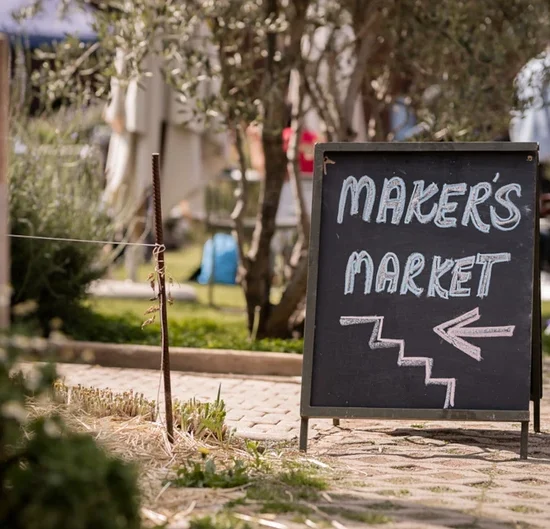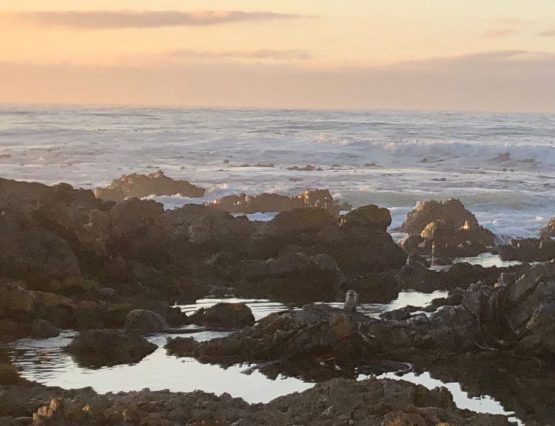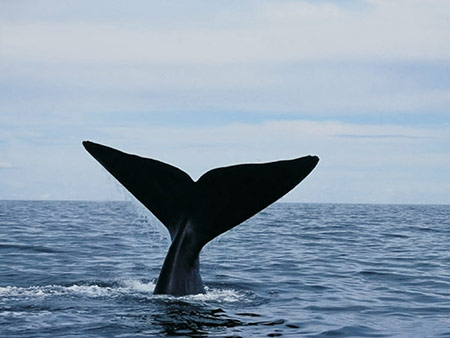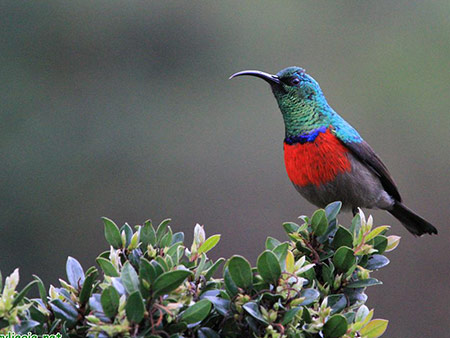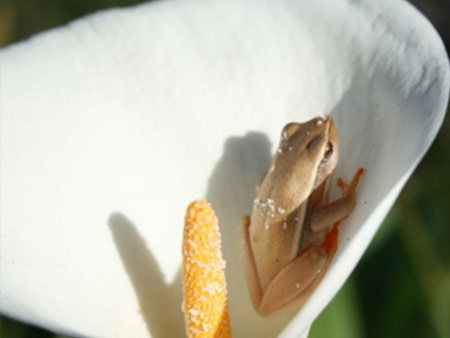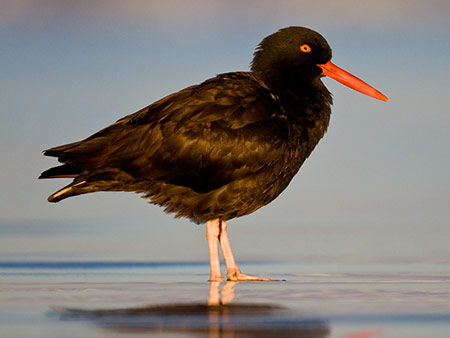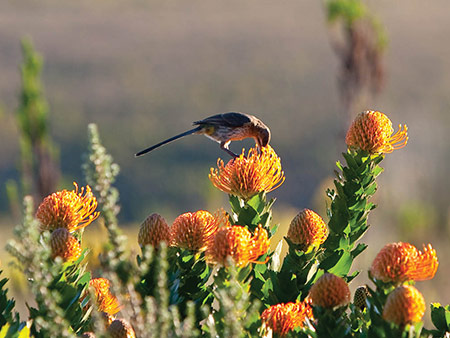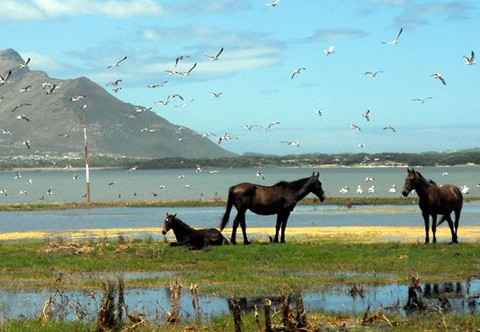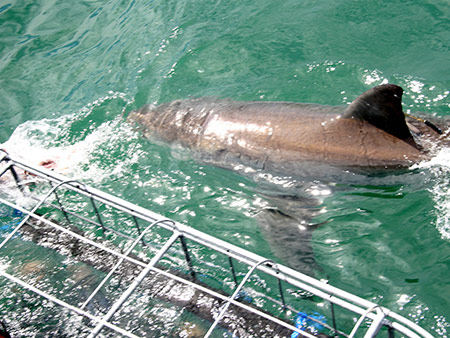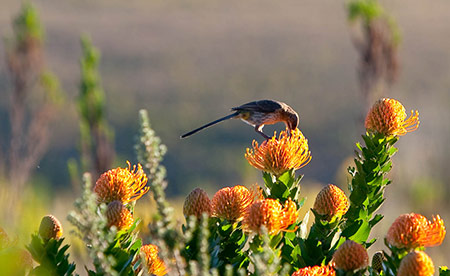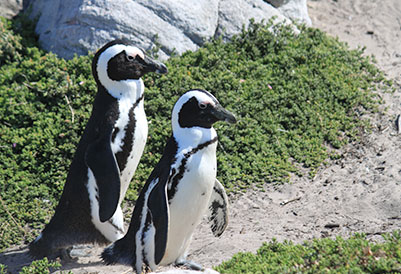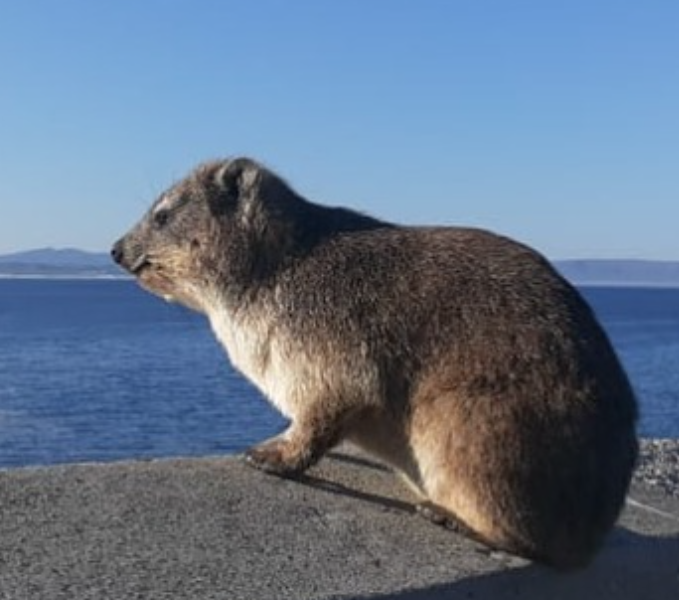Animals
Between Vermont and Onrus a few African Clawless Otters have made a home. These animals are also known as the Cape Clawless Otter. They are nocturnal and have half webbed feet – hence the name clawless. Their biological name refers to this. Aonyx Capensis –…
The Southern Right Whales come to the shores of the Cape Whale Coast in about June each year to mate and calve in the shallow waters. Hermanus has gained the reputation of offering the best land-based whale watching in the world because of the excellent…
Scientific name – Cinnyris chalybeaCommon name – Lesser Double Collared Sunbird, Klein-rooibandsuikerbekkie (Roberts 783) Description Male: The head, throat and back is metallic green, with a small blue band separating the throat from the bright red breast. The tail is black, edged grey. Female: brownish…
The Cape has more than half of South Africa’s frog species. Of the 62 different frogs occurring here, 29 are endemic being found nowhere else on earth. Below are just some of the frogs occurring in fynbos. Frogs are found in a wide variety of…
The African black Oystercatcher is South Africa’s second rarest coastal breeding bird. The total population is less than 5 000 birds. Their glossy black plumage, bright red eyes, beak and legs, and plaintive call make them a distinctive and very appealing species. African black Oystercatchers…
Fynbos cannot support herds of large mammals since the nutrient poor soils on which it grows do not provide enough nitrogen for the protein requirements of large mammals. However, smaller mammals common to fynbos are chacma baboons, klipspringers, grysbok, dassies, mongooses, and the striped mouse.…
Most of us are aware of and some of the readers may even be participants in the world wide pastime of bird watching – I am referring to birds of the feathered kind, of course! It is a fascinating, low-cost pursuit enjoyed by people of…
Unlike the true fishes, sharks don’t have internal bone, but instead have a cartilaginous skeleton (Chondrichthyes). Carcharidon carcharius is one of the largest species of sharks. It has a conical, relatively short snout, long gill slits and a large dorsal fin. The second dorsal fin…
Baboons live mostly in the African woodland savanna, and highland grasslands. They never wander far from trees, or a source of water. The Chacma baboon is found in the countries of Angola, Botswana, Mozambique, Namibia, South Africa, Zambia, and Zimbabwe. On the Cape Whale Coast…
List of Birds found in the Overberg, in alphabetical order: First number = Robert’s Bird Number Second number = Possibility of sighting, where 1= high, 2=average, 3=low, 4=unlikely * =introduced species Name Roberts Number Sighting Albatross Blackbrowed 12 4 Albatross Shy 11 4 Albatross Wandering…
The African Penguin (Spheniscus demersus), also known as the Black-footed Penguin (and formerly as the Jackass Penguin), can be found on the mainland at Betty’s Bay and on Dyer Island near Gansbaai. There is a platform for viewing the Penguins at Stony Point in Betty’s…
The name, dassie, is derived from the Dutch word “das”, meaning badger. The rock hyrax or dassie is a very popular and sociable mammal that is often seen in the Overstrand especially at Gearings Point Hermanus and Stony Point, Betty’s Bay. They are often spotted…


